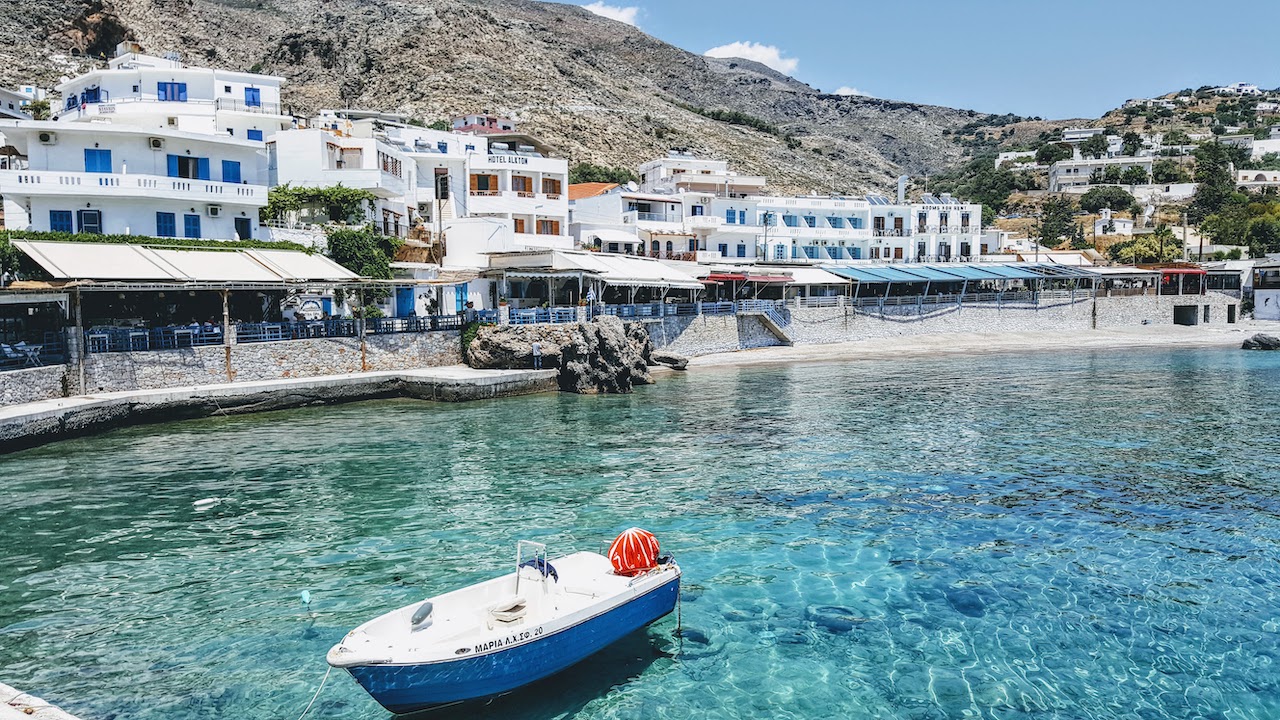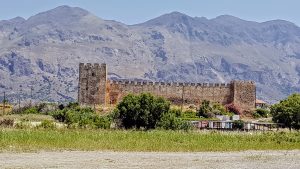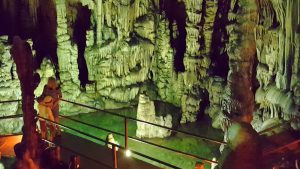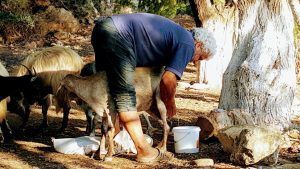As we sit here on the cusp of our ferry back to Greece mainland, I’m feeling very reflective about our month on this real Treasure Island. I have a fancy that it will stay in our hearts and memories, evoking every sense as we recall it.
I’m finding it strangley hard to encapsulate all that we have experienced here, such has been the diversity of the miles we’ve covered and the sights our eyes have been privileged to witness. How do I put all this in words? I don’t normally struggle!
Crete has not been just another country ticked off in our passion for exploring new lands. It somehow feels more significant than that. Not sure I can put my finger on exactly what that means just yet, although something has been birthed here.
Amidst a land that is claimed solely by history and nature and not, as we might think – tourism, I feel a huge sense of pride to have found so much essence on this fair isle. Don’t get me wrong, we are part of a huge number of people who visit here, many who come for a very much shorter space of time than us and who are very happy to simply have the sun and sand.
Yet if you are willing, Crete invites you to look beyond the crowds, coach tours and the touristy northern coast and search deep into its soul. As there you will find an intriguing trilogy between Mother Nature, modern and ancient history and mythology; who blend together to create a Cretan adventure that will leave its mark on your heart.
Neither of us are great historians, although I defy you to be left untouched by the mythogical legends of Zeus, the Minotaur and Poseidon as their stories create the very fabric of Greek culture. And then there’s the ancient history that have left this amazing legacy for us to explore; the Minoans, who are said to be the earliest of European civilisation, a truth which is being increasingly unveiled by findings at ancient sites like Knossos. And let’s not forget that we’re talking up to 2000BC. This is almost beyond comprehension and yet demands a deep respect as you tread in ancient footprints. More recent history has also left indelible scars on this land and the current generation as WW2 invasions, massacres and German occupation influences their memories. Yet the Cretans are, like Greeks across the water, the most warm, engaging and generous of people. In the older generation you can see history etched into the lines on their faces and, as they walk by, they seem to carry the world on their shoulders like Atlas in mythology. What must their treasured island feel like with this throng of visitors passing by their simple homes, let alone a 7.5 metre motorhome? Strange times indeed and we are grateful for their sharing and community spirit.
Crete is a complex partnership of mountains, that form the island’s backbone, and the forces of the sea and wind who together, continue to shape its landscape. No matter where on Crete you travel, you always pass in a mountain’s shadow, which is strangley comforting. And then in a whisper, you are drawn to the sparkling aqua and azure seas, as if in some futile competition. As you approach the sea’s domain, it’s almost as if the mountains have slid gracefully in surrender, creating secret coves and stunning beaches to amaze and enthral. The south offers most of these secret treasures, many only accessible on foot. And so it is a haven for naturists who bare all without fear of intrusion. Lagoons, long strands of sand, dunes and bays of curvaceous beauty, all with the backdrop of the magestic mountains, covered in a greenery that will surprise and delight you.
Yet look a little deeper and you will uncover a different Crete, one carved millions of years ago. Whichever compass point you look, Crete gives you a different geology lesson; uniquely shaped rock formations that tell you a tale, if you unsdertand its language. From the crocodile rocks in Agios Pavlos in the south, to the pink sands at Elafonisi and the 50 gorges that clearly make their mark on Crete’s canvas. The volcanic and tectonic legacy is evident everywhere, each one telling a unique tale from its past.
The gorges themselves are incredibly special and as you enter the bosom of their souls, they take you into their protection and transport you to a whole new world. We walked four of the lesser known gorges as we didn’t want to share the experience with thousands of others eager to conquer the feat that is the Samaria Gorge. Plus you simply can’t do them all and to add insult to injury, I was supporting an Achilles’ tendon strain – only in Greece eh. So Pefki and Butterfly Gorge in the east and Imbross and Irini in the south west were our four nemeses. Each one giving us unique challenges. Pefki with its 300ft ascent, Butterfly with her rock climbing endeavours, Imbross, the uphill hIke through an old river bed with narrow cliffs teaming with the sound of insects and the equisit 8km Irini gorge that snakes through the mountains with dexterity and grace to the orchestral melody of your own personal aviary. Their architecture is astonishing and as long as you can take your eyes off where you’re walking for two minutes, you can appreciate Mother Nature’s artwork that rises above your head.
Now speaking of architecture, I have to be honest that all Crete’s design efforts goes into the landscape and not the buildings. Whilst it is undeniable that the churches and mountain-top chapels are devine, literally, I didn’t really think much to the Cretan villages. Krista to the east was lovely, the old town of Chania charming and the harbour towns quaint. Although on the whole they really did disappoint me. I guess I have been spoilt by Santorini and Mykonos, so they have a lot to live up to. I do love how the deep purple and pink bougainvillea drape seductively across telephone wires and concrete balconies, in a vain attempt to shield their plainness, although only with a modicum of success. That said their delightful homes turned tavernas in EVERY village you pass just shows the Greek’s entrepreneurial spirit. Partnered with the stalls on the roadside that offer the weary traveller a tempting gastronomic tease with their local honey, raki (fire water!!) and olive oil goods, they are just too good to bypass. You want organic this is the place to come.
I can’t miss the chance to share the vision of the pink and white oleanders that border the main roads, creating a corridor of colour that make an otherwise boring piece of tarmac quite picturesque. The delicate red poppies wave in the breeze, the yellow broom brings the mountainside to life and the wild sage and thyme fills the air as you pass by. And then there’s the goats that cling to the gorge edges defying gravity and yet are still able to yield the most wholesome milk for a sensational cheese. I shall never again be able to eat this without accompanying it with a delicate dribble of organic honey – just a marriage made in heaven.
So what did we learn from our Cretan experiences? First and foremost, Crete is big. Underestimate it at your peril. A month is just not long enough to do it anywhere near enough justice. We did well with our five centred ‘homes’ although there is so much we had to miss.
Secondly, Crete is stunningly diverse. Whether you like hiking, snorkelling, photography, botany, beaches, buzzy towns, history or mountains – you will not be disappointed.
Finally Crete offers 15 campsites; some of which can only be loosely described this way. They are often small, basic although always welcoming and often with stunning swimming pools. If their signs say ACSI, it is unlikely to end up in a discount as most times their inspection has either run out and it’s an old sign or it’s just an inspection sign, which don’t offer discounts. That said we paid between €17-26 per night with electric. Wild camping is doable although not as profusely as on mainland Greece, yet we managed to find some stunning spots that were made in heaven or somewhere close. That said we found that if we centred ourselves in one place, then either use our bikes or hire a car, we covered more ground. You can get a car for about €25-35 per day, depending on the length of hire and it’s great to nip to places more quickly than with a 3.5T motorhome. The roads are very doable, on the whole and although sometimes twisty and wiggly, travelling around the island wasn’t difficult. Just sometimes more efficient with a car.
So what would my closing reflections of Crete be? Come! Simple as that really. I know it’s the furthest south you can get in Europe, although please come. Either fly and hire a motorhome from:
www.campergreece.com; www.motorhomes.gr or www.spicycampers.com
…or make the overland journey sailing from Piraeus to Hirakleon or Chania with Anek Lines. The €400 return journey was, in my view an absolute investment and the best way I could imagine to spend that money. Crete will take hold of you by the heart, pull on your strings and offer you an experience, not a holiday. Its richness, colour and diversity will make it so memorable that photos will not be required. You will relive your Cretan Odyssey through your dreams.
Why not download our free eBook dedicated to Crete by clicking here, or for more on Greece generally you can find a huge bunch of blogs on our Archive.
With love and and admiration for Crete, Mrs Moneypenny.










0 Comments
Trackbacks/Pingbacks